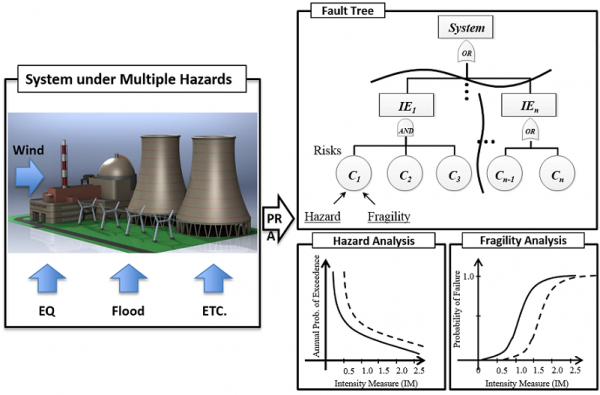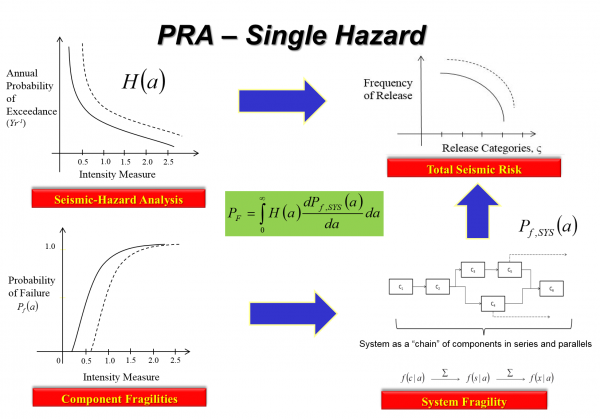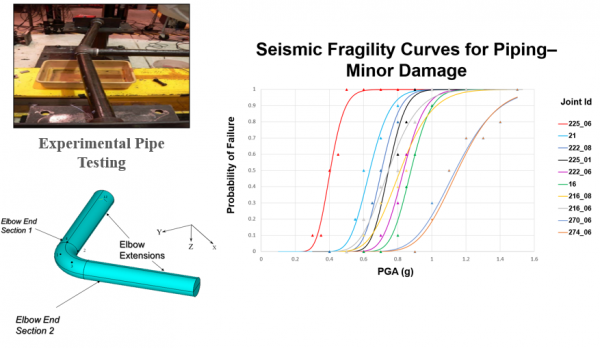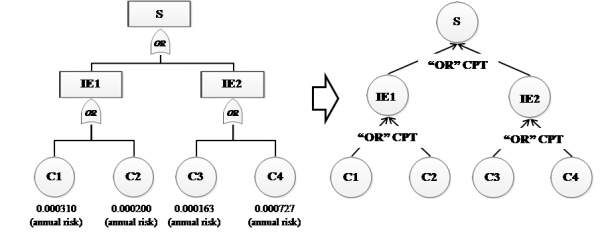Probabilistic Approaches in Structural Engineering
How can we increase the safety and reliability of the structures using probabilistic tools and design?
Probabilistic approaches have long served as the basis of acceptance criteria in most codes and standards. Development of load and resistance factored design approaches evolved from a formal consideration of uncertainties in the load effects, material characteristics, and the capacities of a structural component or system. In recent years, many industries have moved towards reliability-based design and risk-informed regulation. Probabilistic approaches have enabled significant progress in multi-hazard risk assessment for extreme external events such as flooding and high winds. Current research in the department varies from development of theoretical statistical approaches to industry needs such as application of risk assessment methodologies. Research in this area aims to support engineering design and improve the reliability through appropriate decision making in the context of uncertainties.

Conventional PRA methodologies conduct risk assessment for different external hazards by considering each hazard separately and independent of each other. The framework proposed in this project can consider general relationships among risks from multiple hazards, allows updating by considering the newly available data/information at any level, and evaluate scenarios for vulnerabilities due to beyond design basis events.

Probabilistic seismic risk assessment for critical facilities such as nuclear plants is quite a complex undertaking. Industry practice based on simplified methods can be quite conservative. Simulation based risk assessment can be quite effective in reducing the unwanted excessive conservatism. However, it requires development of efficient computational schemes such as those being developed in this project.

Assessment of internal flooding scenarios is critical in seismic probabilistic risk assessment for chemical, energy, and healthcare facilities. A probabilistic risk assessment requires characterization of limit states, determination of potential leakage locations, leakage intensity, flooding scenarios, and leakage fragilities. The fragilities for seismically induced piping leakage serve as an input for a internal flooding scenario.

Availability of sophisticated computer models capable of simulating multi-physics multi-scale phenomena has increased the need for verification and validation of such high-fidelity simulations. Risk-informed probabilistic approaches can provides a quantitative assessment of validation for a system-level simulation model based on component-level validation information. A performance-based criteria is used to judge the efficacy of validation.
